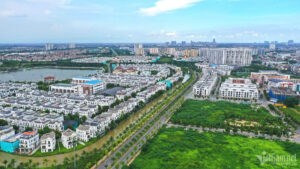The Belt and Road Initiative, an ongoing effort to link economies into a China-centred trade network, largely via Chinese-backed megaprojects abroad, has entered a phase that Beijing says involves “small but beautiful” additions.
As the plan to grow global trade approaches its 11th anniversary, the ambitious undertaking is expected to shift away from massive projects that have sometimes been accused of resulting in large debt piles or environmental damage in other countries.
Here are four points of interest and importance for the initiative in the coming
decade:
Do you have questions about the biggest topics and trends from around the world? Get the answers with SCMP Knowledge, our new platform of curated content with explainers, FAQs, analyses and infographics brought to you by our award-winning team.
China has present or past agreements with 152 countries to pursue belt and road projects. Belt and road work could eventually cost Beijing US$1 trillion to US$8 trillion over an unspecified period, the Centre for Strategic and International Studies think tank estimated in 2018.
Today, 44 of those countries are in sub-Saharan Africa, more than in any other region.
Over the next decade, China might shift its focus to Central and Southeast Asia, said Jayant Menon, a senior fellow at the ISEAS-Yusof Ishak Institute in Singapore. Central Asian projects help fortify China’s trade links to Europe because of the largely landlocked region’s geography, he explained.
Landlocked countries “can become land-linked”, President Xi Jinping said last year at the Third Belt and Road Forum for International Cooperation.
Developed nations are likely to stay out, said John Simon, senior adviser for the Project on Prosperity and Development under the Centre for International & Strategic Studies, a US think tank.
Those countries, he said, see little benefit from China’s initiative, and “the few that have received [belt and road financing] have not had great experiences”, he said. In total, 17 European Union countries have previously taken part. Italy withdraw from the initiative in December.
The belt and road plan will “deepen cooperation” abroad in “green infrastructure, green energy and green transport”, Xi said at a forum for the initiative in October.
Hydroelectric, wind and solar energy projects particularly fit into the “new era”, he said.
In Bangladesh, for example, a wind-power project invested by China-based Wuling Power and built by PowerChina Chengdu Engineering will cut coal use by 44,600 metric tonnes, the Shenzhen Daily reported last
year.
Future projects will run less debt risk than earlier ones and would – if small and non-polluting – reduce criticism from abroad about environmental degradation or population resettlements, Menon said.
For instance, in June, Xinhua said that the Namagumba-Budadiri-Nalugugu Road in Uganda’s mountainous eastern region would be upgraded from gravel to asphalt. Chinese construction firm Shandong Luqiao Group is tasked with improving a 39km (24-mile) stretch of the road. The three-year effort will employ more than 600 locals and reduce travel time from one hour to 20 minutes in a region known for its trade in coffee, bananas, potatoes and milk.
“Overall, the [Belt and Road
Initiative] will likely become more commercial and aim to position itself distinctly from Western development models,” said Christoph Nedopil Wang, director of the Shanghai-based Green Finance & Development
Centre.
China, like Japan and the United States, is shifting to multilateral development banks to find funding for its projects in other countries.
Beijing could go in that direction by tapping the Asian Infrastructure Investment Bank (AIIB), Menon said. China spearheaded creation of the AIIB in 2016, and the Beijing-based lender now has 109 member countries.
Source: SCMP




